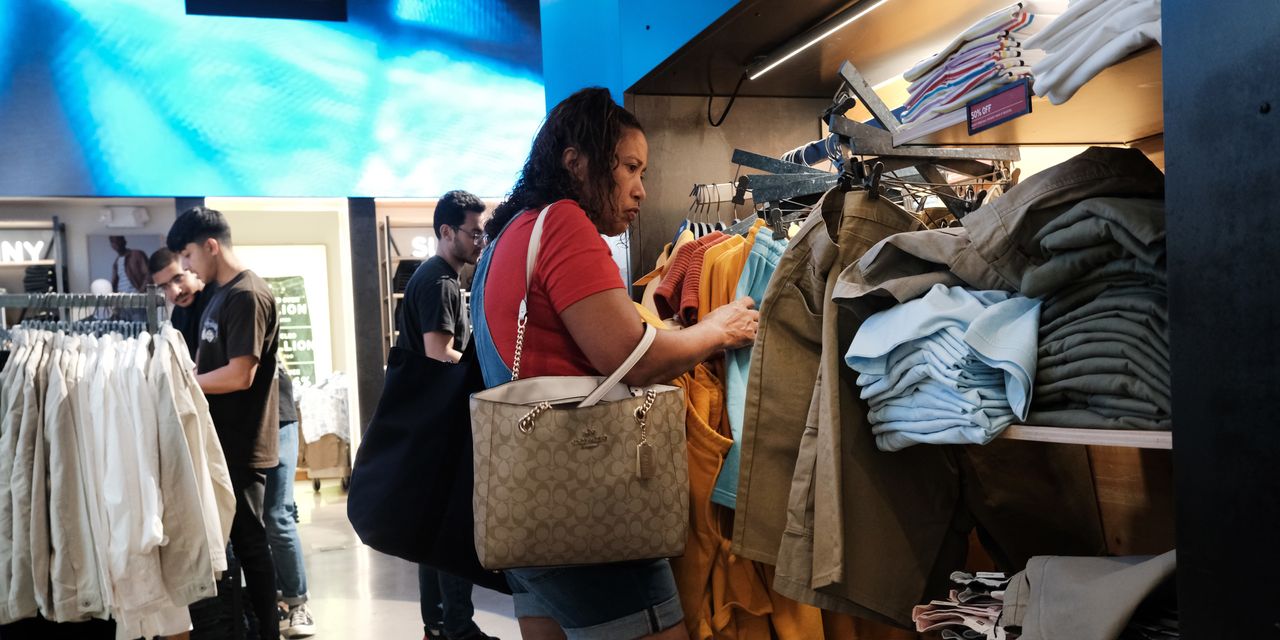The U.S. was supposed to be in or near recession by now because of rising interest rates. Instead a resilient economy is seeking to pull off a third “two-fer” in a row in 2023.
That is, 2% growth in gross domestic product, the official scorecard of the economy.
Almost halfway through the third quarter, GDP is on track to expand at an annual 2.4% to 4.1% pace, based on two of the most closely followed forecasters.
The Atlanta Federal Reserves Nowcast puts estimated growth at 4.1%. S&P Global, arguably the gold standard on Wall Street, estimates a 2.4% increase.
The estimate is likely to shrink closer to 2% by the time the quarter ends in September, but even so, it would be a remarkable achievement. Higher borrowing costs historically depress the economy and often lead to a recession within a year or two.
For almost a year and a half, the Federal Reserve has been raising a key short-term U.S. interest rate, bringing it from near zero to a top end of 5.5% as it battles to slay high inflation.
Yet the economy grew at a solid 2% annual pace in the first quarter and an even faster 2.4% clip in the second quarter. The surprising rate of growth this year has slightly exceeded what analysts view as the top sustainable speed for the economy.
It wasn’t supposed to happen. Senior Fed officials predicted the economy would slow to a crawl in 2023 while business economists put the odds of recession at 50% or higher.
The economy has not gone unscathed, of course.
Soaring interest rates have depressed the housing market, sapped the manufacturing industry, curtailed business investment and forced banks to scale back loans. The economy has suffered damage.
Yet the bedrock of the economy — consumer spending — has remained quite firm. Americans are buying relatively fewer goods such appliances, but they are spending big on services such as travel, recreation and dining out.
Some economists call it a post-pandemic splurge on the sort of things people were unable to do until the coronavirus ran its course. The biggest assist probably has to go to a dynamic labor market, though.
Most Americans who want a job can find one, keeping the unemployment rate near a half-century low of 3.6%. Businesses are still hiring despite worries about recession and they are reluctant to lay off workers in light of the worst labor shortage in modern times.
Just look at initial jobless benefit claims, a proxy for layoffs. They fell sharply in the past month and returned close to post-pandemic lows after an early-summer spike.
“With initial and continued jobless claims also moving lower, the economy seems to be stabilizing after a wobbly patch that began in mid-2022,” said Bill Adams, chief economist at Comerica.
The tight labor market, in turn, has driven wages up at the fastest pace in years. Not enough to fully offset an increase in prices due to high inflation, but enough to limit the damage.
The result: Consumers feel confident enough to keep spending — and to keep the economy expanding. Surveys of consumer confidence, what’s more, have improved considerably in the last few months after sinking to fresh lows early in the year.
Confidence among big and small businesses alike has also partly recovered from recent lows, helped by steady consumer demand and strong profits.
“Corporate earnings statements so far suggest that businesses continue to hold up reasonably well,” said Stephen Stanley, chief economist at Santander Capital Markets.
There are other tailwinds, too.
The government is spending well above pre-pandemic levels, including green-energy related subsidies for manufacturers and higher Social Security benefits due to inflation.
Savers are also finally getting a decent return on bonds, savings accounts and the like.
Can the economy retain its momentum in the final few months of 2023?
It will depend on whether the rises in the cost of labor moderate and inflation continues to slow toward the Fed’s 2% target. Inflation is now running between 3% and 4.8%, depending on the measure.
Easing price pressures would allow the Fed to end its current cycle of interest-rate increases and give the economy more breathing room, while higher rates would do the opposite.
Some economists and Fed officials even think such a scenario could lead to a fabled soft landing in which the Fed vanquishes inflation without triggering a recession. It’s only happened once or twice since World War Two.
“There is still a plausible story that inflation normalizes in short order and the economy dodges additional trauma,” Richmond Fed president Thomas Barkin said.
That’s not something the centrist Barkin might have expected one year earlier, when he pointed out in another speech that eight of the Fed’s previous rate-hike cycles had ended in recession.
Read the full article here








